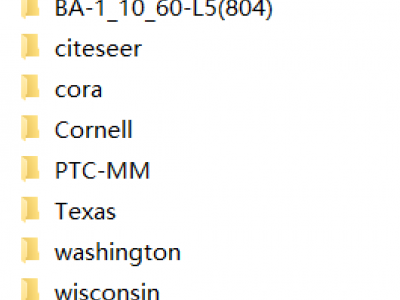Machine Learning
Basil/Tulsi Plant is harvested in India because of some spiritual facts behind this plant,this plant is used for essential oil and pharmaceutical purpose. There are two types of Basil plants cultivated in India as Krushna Tulsi/Black Tulsi and Ram Tulsi/Green Tulsi.
Many of the investigator working on disease detection in Basil leaves where the following diseases occur
1) Gray Mold
2) Basal Root Rot, Damping Off
3) Fusarium Wilt and Crown Rot
- Categories:
 6764 Views
6764 Views
This is data and code for the Junction link in the roundabout.
- Categories:
 134 Views
134 ViewsThe PD-BioStampRC21 dataset provides data from a wearable sensor
accelerometry study conducted for studying activity, gait, tremor, and
other motor symptoms in individuals with Parkinson's disease (PD). In
addition to individuals with PD, the dataset also includes data for
controls that also went through the same study protocol as the PD
participants. Data were acquired using lightweight MC 10 BioStamp RC
sensors (MC 10 Inc, Lexington, MA), five of which were attached to
each participant for gathering data over a roughly two day
interval.
- Categories:
 10201 Views
10201 ViewsData set of 26/11 Mumbai attack is based on Mumbai Terrorist Attacks 2008 India Ministry of External Affairs Dossier and News reports. 10 terrorist operated in India distributed in five sub-groups, simultaneously 3 other person comes in light as per report those were having in continue touch with these terrorist from Pakistan and giving them instructions.
- Categories:
 1079 Views
1079 ViewsThis dataset contains 4669820 ratings from 1499238 users to 351109 movies on the imdb.com website. This data is collected from reviews (https://www.imdb.com/review/rw0000001/). Each row in this dataset is as follows:
userID, movieID, rating, review date
For example :
ur18238764, tt2177461, 9, 22 January 2019
- Categories:
 5785 Views
5785 Views
- Categories:
 891 Views
891 Views
Fall is a prominent issue due to its severe consequences both physically and mentally. Fall detection and prevention is a critical area of research because it can help elderly people to depend less on caregivers and allow them to live and move more independently. Using electrocardiograms (ECG) signals independently for fall detection and activity classification is a novel approach used in this paper.
- Categories:
 1429 Views
1429 Views
Falls are a major health problem with one in three people over the age of 65 falling each year, oftentimes causing hip fractures, disability, reduced mobility, hospitalization and death. A major limitation in fall detection algorithm development is an absence of real-world falls data. Fall detection algorithms are typically trained on simulated fall data that contain a well-balanced number of examples of falls and activities of daily living. However, real-world falls occur infrequently, making them difficult to capture and causing severe data imbalance.
- Categories:
 1136 Views
1136 Views


